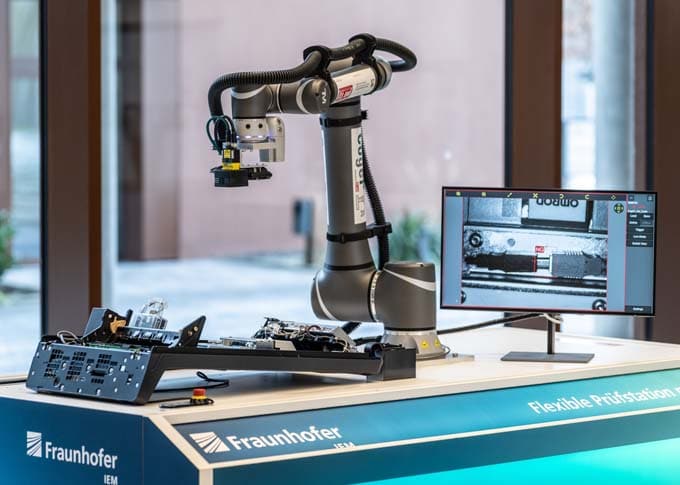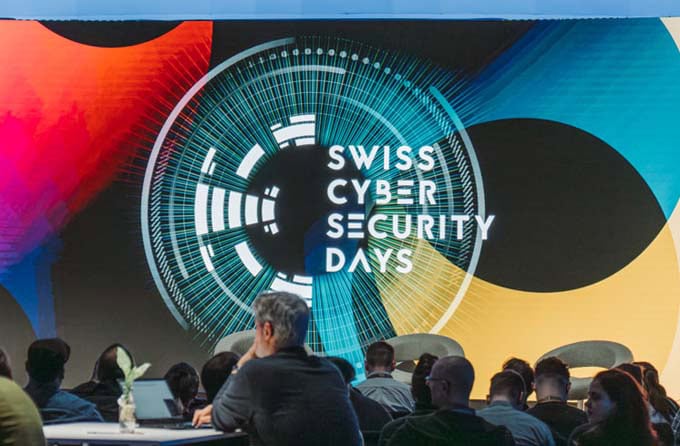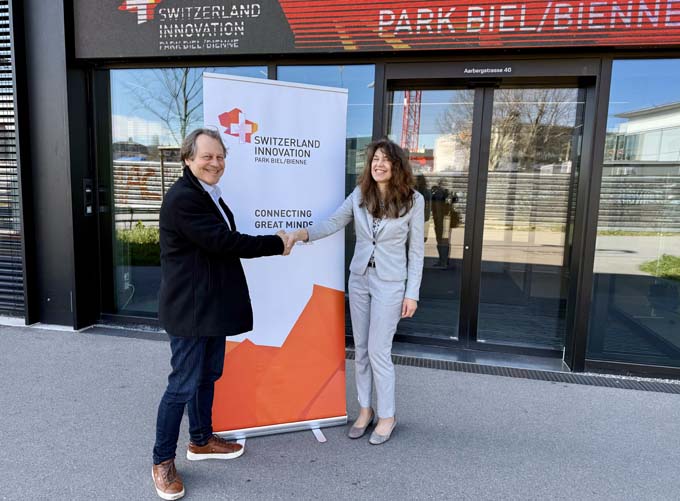Fraunhofer presents flexible testing station with cobot
The manual quality inspection of components or products in industry is strenuous for employees and also prone to errors. The Fraunhofer Institute for Mechatronic Design IEM presented a universally applicable solution for this in the run-up to the Hannover Messe. This was developed in collaboration with the ATM manufacturer Diebold Nixdorf and the software specialist Verlinked and is a combination of a collaborative robot (cobot), AI-based image analysis and an IoT platform.

Collaborative robots (cobots) are considered a key technology in the industry. The robots, most of which are equipped with AI and sensor technology, work together with humans on the production floor and enable flexible and intelligent automation concepts. In times of batch size 1, fragile supply chains and ever-changing regulations, this is an enormous competitive advantage. The Fraunhofer IEM will be presenting what it describes as a particularly flexible cobot solution at Hannover Messe 2024, which takes place from April 22 to 26. Together with Diebold Nixdorf and Verlinked, the Fraunhofer researchers have developed an inspection robot in the it's OWL project CogeP (Cobot-supported inspection stations for intelligent technical systems): Employees use the robot to check the quality of ATM control panels quickly and without errors - and effortlessly convert it to ever new testing tasks.
AI-supported quality inspection
To check the control panels, the sensor-supported robot arm guides a camera over the components, workpieces or products to be analyzed from several angles. The AI-supported image evaluation analyzes the quality, then the robot guides the camera over the next product. If the analysis software detects defects - such as an incompletely tightened screw or an unstable plug connection - the system notifies the responsible employees, who can correct the error quickly and in a targeted manner. In addition to productivity in production, employees also benefit from the Cobot solution. Dr. Eugen Djakow, Group Manager for Automation and Production Technology at Fraunhofer IEM, says: "Manual visual inspection in production is a monotonous, strenuous and error-prone task for employees. The inspection robot completes such tasks quickly and reliably. This also makes the work of people in production more interesting and less monotonous."
IoT platform enables a wide range of test scenarios
The highlight of the solution is the combination of the inspection robot with an IoT platform. It acts as a real-time data center, assigns the inspection tasks, stores their results and collects the data across robots and orders. This allows the inspection processes to be further optimized. The collected data can also be used to adapt the inspection for a new product version without any programming effort. The inspection only needs to be slightly updated for new variants of a product. "Cobot-supported test stations can collect all test and operating data in the central IoT platform and retrieve it in real time. This allows companies to reconfigure their test routines to new requirements without expensive conversions or investments. The system thus serves as a universally applicable tool for any test scenario," adds Djakow.
Advantages for SMEs: Flexible integration of cobot workstations into production
The cobot solution presented is intended to be suitable not only for testing processes, but also for assembly, order picking and general factory support. This solution should also make it possible for SMEs to integrate cobot workstations into existing production processes cost-effectively and with little effort. This means that they too can change their production at short notice or adapt it to small quantities or even the production of individual items.
Source and further information: Fraunhofer Institute for Mechatronic Design IEM
This article originally appeared on m-q.ch - https://www.m-q.ch/de/fraunhofer-praesentiert-flexible-pruefstation-mit-cobot/









